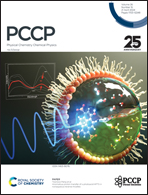Solvent-induced dual nucleophiles and the α-effect in the SN2 versus E2 competition†
Abstract
We have quantum chemically investigated how microsolvation affects the various E2 and SN2 pathways, their mutual competition, and the α-effect of the model reaction system HOO−(H2O)n + CH3CH2Cl, at the CCSD(T) level. Interestingly, we identify the dual nature of the α-nucleophile HOO− which, upon solvation, is in equilibrium with HO−. This solvent-induced dual appearance gives rise to a rich network of competing reaction channels. Among both nucleophiles, SN2 is always favored over E2, and this preference increases upon increasing microsolvation. Furthermore, we found a pronounced α-effect, not only for SN2 substitution but also for E2 elimination, i.e., HOO− is more reactive than HO− in both cases. Our activation strain and quantitative molecular orbital analyses reveal the physical mechanisms behind the various computed trends. In particular, we demonstrate that two recently proposed criteria, required for solvent-free nucleophiles to display the α-effect, must also be satisfied by microsolvated HOO−(H2O)n nucleophiles.

- This article is part of the themed collections: Celebrating International Women’s day 2025: Women in physical chemistry and 2024 PCCP HOT Articles


 Please wait while we load your content...
Please wait while we load your content...